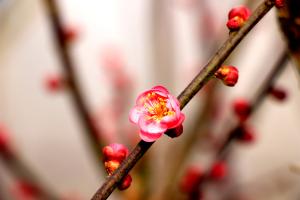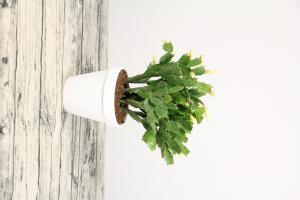How to Prune Rubber Tree Plants
Rubber tree plants are stunning indoor plants that can add a touch of greenery and elegance to any space. While these plants can grow tall and bushy, they may require pruning to maintain their shape and size. Pruning rubber tree plants may seem daunting, but with the right approach and tools, it can be a straightforward process that can improve the overall health and appearance of your plant.
Why Prune Rubber Tree Plants
Pruning rubber tree plants is not only necessary for keeping them at a manageable size, but it can also be beneficial for their health. Overgrown plants can become too heavy for their stems to support, potentially causing them to collapse or break. Pruning also helps stimulate new growth and prevents the plant from becoming too leggy. Regular pruning can also help keep the plant's shape and size consistent with its surroundings.
When to Prune
Rubber tree plants can be pruned at any time of the year, but it's best to do so during the growing season. Spring and early summer are the best times to prune, as this is when the plant is actively growing. Avoid pruning during winter or the dormant season, as this can slow down the plant's growth rate and recovery time.
How to Prune
Before pruning, make sure you have a sharp and clean pair of pruning shears. Use alcohol or another disinfectant to sterilize the blades to reduce the risk of introducing bacteria or fungal infections to the plant. Begin by removing any dead or damaged leaves or stems, cutting them off as close to the base as possible. Next, decide on the shape and size you want for your plant and begin trimming the branches accordingly, starting at the top and working your way down. Avoid pruning too much at once, as this can damage the plant and reduce its ability to recover.
Advanced Techniques
If you want to be more adventurous with your pruning, there are a few advanced techniques you can try. One is called "topping," which involves cutting off the top of the plant or stem. This technique can help promote lateral growth but should only be done on younger plants. Another technique, called "pollarding," involves removing all the stems and branches except for a few, creating a more minimalist look. This technique is commonly used in outdoor landscaping and may not be suitable for indoor plants.
Caring for Pruned Rubber Tree Plants
After pruning your rubber tree plant, it's crucial to care for it properly to ensure it thrives. Water the plant thoroughly, making sure the soil is moist but not waterlogged. Avoid fertilizing the plant for a few weeks after pruning, as this can stress the plant and hamper its recovery. Finally, provide your plant with plenty of light, ideally in a well-lit room, but away from direct sunlight, which can damage the leaves.
Conclusion
Pruning your rubber tree plant can help keep it healthy and looking great. Whether you're removing dead leaves or branches or shaping the plant, the key to successful pruning is taking it slow and steady. Follow these tips and techniques, and you'll be rewarded with a thriving and beautiful rubber tree plant that will continue to bring joy and elegance to your home or office for years to come.

 how many times do yo...
how many times do yo... how many planted tre...
how many planted tre... how many pine trees ...
how many pine trees ... how many pecan trees...
how many pecan trees... how many plants comp...
how many plants comp... how many plants can ...
how many plants can ... how many plants and ...
how many plants and ... how many pepper plan...
how many pepper plan...































